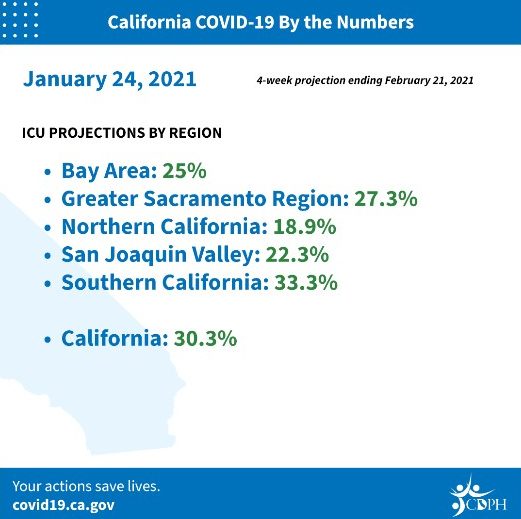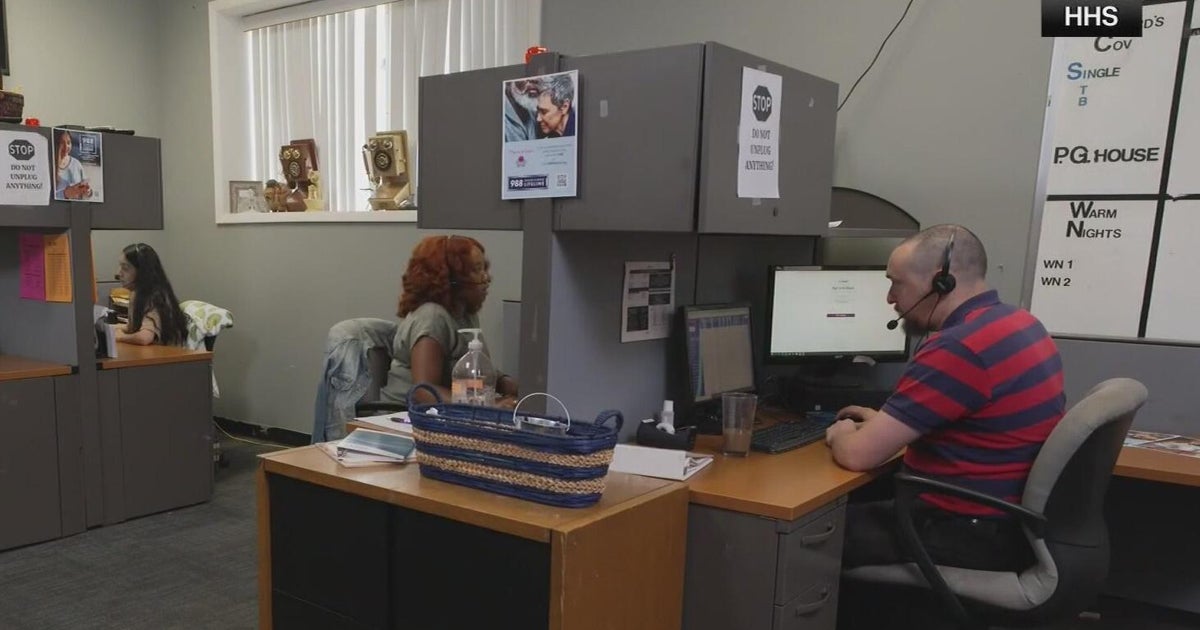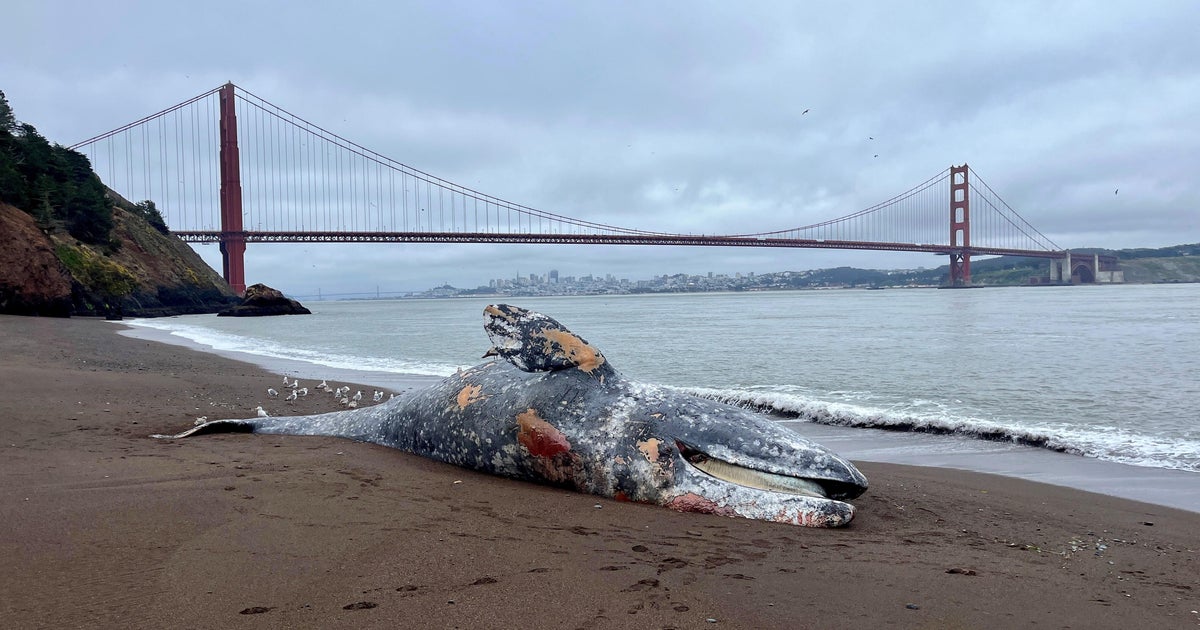California Lifts Restrictive COVID-19 Stay-At-Home Order; 'Light At The End Of The Tunnel'
SAN FRANCISCO (CBS SF) -- With a surge of COVID-19 cases easing and ICU bed availability beginning to soar, Governor Gavin Newsom on Monday announced California was lifting a restrictive stay-at-home order Monday for all five California regions, opening the way for a return to limited restaurant dining, religious services and other activities.
The state will now return to the tier system of enforcement with most counties placed in the purple level initially. State officials also lifted a 10 p.m. to 5 a.m. curfew.
RELATED: COVID Reopening: Information On Tier Status And What's Open By County
Among the sectors reopening include outdoor dining, gyms, places of worship and wineries. Indoor retail can open at 25% capacity along with personal care services, such as hair and nail salons.
Following the lifting of the stay-at-home order, some shuttered businesses didn't take long for resume operations.
"We felt it was coming based on the ICU beds jumping on Thursday and Friday and Saturday, so we felt everything was trending in the right direction," said Todd Utikal, owner of Sidetrack Bar & Grill in Pleasanton.
Regina Muslimova with Insignia Hair Salon in Walnut Creek said, "I'm just hoping that was the last shutdown, and from now on we can just operate at the normal, steady pace."
RELATED: Explanation Of California Color-Coded Tier System
The county-by-county tier system uses various metrics to determine the risk of community transmission and apply a color code — purple, red, orange or yellow — which correspond to widespread, substantial, moderate and minimal, respectively.
Newsom abandoned the COVID-19 county-by-county tier system and instead broke the state up into five regions in December. If a region fell below 15% capacity in its ICU availability, strict new restrictions went into place.
Eventually, ICU availability in the San Francisco Bay Area, Sacramento Area, Southern California and San Joaquin Valley all dropped below 15%. The only region that did not was Northern California.
Sacramento has since reopened Newsom said all five regions are now projected to above the 15% threshold, with the Bay Area has seeing a large swing ICU capacity from just 6.5% to 23.4% this weekend. Statewide, the ICU capacity is now projected to be 30.3%.
 Aside from ICU capacity rates climbing, Newsom said the statewide 14-day positivity rate has now dropped to 9.4% down from 13.6% two weeks ago, and the seven-day positivity rate has dropped to 8%, which Newsom said ranks better than half of all U.S. states.
Aside from ICU capacity rates climbing, Newsom said the statewide 14-day positivity rate has now dropped to 9.4% down from 13.6% two weeks ago, and the seven-day positivity rate has dropped to 8%, which Newsom said ranks better than half of all U.S. states.
The governor also said statewide hospitalizations have dropped nearly 20% over the past 14 days, and the ICU admissions have dropped 9.5%.
"We are in a position projecting four weeks forward, with a significant decline in the case rates, positivity rates, we are anticipating a decline, still more decline in hospitalizations and more declines in ICUs," said Newsom. "And that's why we're lifting that stay-at-home order, effective immediately today."
California saw another 27,007 people test positive for COVID on Sunday, for a total of 3.14 million cases. There were 328 additional deaths from the virus on Sunday, with the state totaling 37,118 deaths since the beginning of the pandemic.
With most of the state's counties still in the purple tier, the governor said updates to county tier levels would be announced on Tuesday.
"We're seeing a flattening of the curve, everything that should be up, is up. Everything that should be down, is down: Case rates, positivity rates, hospitalizations, ICUs," said Newsom. "Testing is starting to go back up, as well as vaccination rates in this state, but we are not out of the woods."
In the purple tier, county officials will be able to start slowing reopening businesses shuttered when the stay-at-home order was put in place after the Thanksgiving holiday when new cases soared, filling up hospital and ICU beds.
"California is slowly starting to emerge from the most dangerous surge of this pandemic yet, which is the light at the end of the tunnel we've been hoping for," said California Health and Human Services Secretary Dr. Mark Ghaly. "Seven weeks ago, our hospitals and front-line medical workers were stretched to their limits, but Californians heard the urgent message to stay home when possible and our surge after the December holidays did not overwhelm the healthcare system to the degree we had feared."
UCSF Infectious Disease Expert Dr. Monica Gandhi told KPIX 5 that she was encouraged by the region's ICU availability. She is seeing hospitalizations drop first-hand at Zuckerberg San Francisco General, where she also works.
"We did not see the surge that was predicted. We did from Thanksgiving, and then it was not as bad at Christmas and New Year's at all that was predicted," she told KPIX 5.
Ghaly told reporters Monday the state is now making available the data used to formulate the ICU capacity projections, days after Gov. Newsom and health officials faced a new round of criticism over not sharing the projection data used to justify the state's regional stay-at-home orders.
"We will make these data points - the model, if you will - what goes into the inputs into the projection available on the CDPH website. I believe they are available today," said Ghaly.
Republicans said the Democratic governor was relaxing the rules in response to political pressure and the threat of a recall. Republican organizers have until mid-March to gather 1.5 million signatures to force a recall against Newsom, who is halfway through his first term.
"This Governor's decisions have never been based on science. Him re-opening our state is not an attempt to help working Californians, but rather an attempt to counter the Recall Movement. It's sad and pathetic," California Republican Party Chairwoman Jessica Millan Patterson tweeted.
Newsom disputed the notion that the state was lifting the stay-at-home order in response to the recall campaign underway against him and lawsuits filed over the state's health orders.
"It's complete utter nonsense, so let's just dispense with that," said Newsom, adding that the state's decisions on COVID have been "data-driven, scientifically based (and) not arbitrary."
Also during his Monday news conference, Newsom also spoke about the launch of a website to help Californians learn when they are eligible to receive the COVID vaccine and schedule appointments.
The MyTurn website is a pilot program that allows Californians to register to be notified when it's their turn for the vaccine in a number of counties. Currently, it only can be used to schedule appointments for health care workers and people 65 and older.
"We believe that the cohort 65 and older needs to be be prioritized alongside healthcare workers, first responders, food and agriculture workers, and school staff and teachers," said Newsom. "Once we work through those cohorts, represented here clearly, to an age-based eligibility, which will allow us scale up much more quickly and get vaccines to impacted communities much more expeditiously. With the framework always on equity, we're not losing sight of any of those fundamentals, any of our values, but we realize we have got to increase throughput here."
State health officials warned that lifting the stay-at-home order was not a reason for Californians to become lax in practicing the measures that prevent the spread of the virus.
"While there are positive signs that the virus is spreading at a slower rate across the state, the COVID-19 pandemic is far from over," state officials said in a release. "It is still critical that Californians continue to wear masks when they leave their homes, maintain physical distance of at least 6 feet, wash their hands frequently, avoid gatherings and mixing with other households, follow all state and local health department guidance and get the vaccine when it's their turn."



